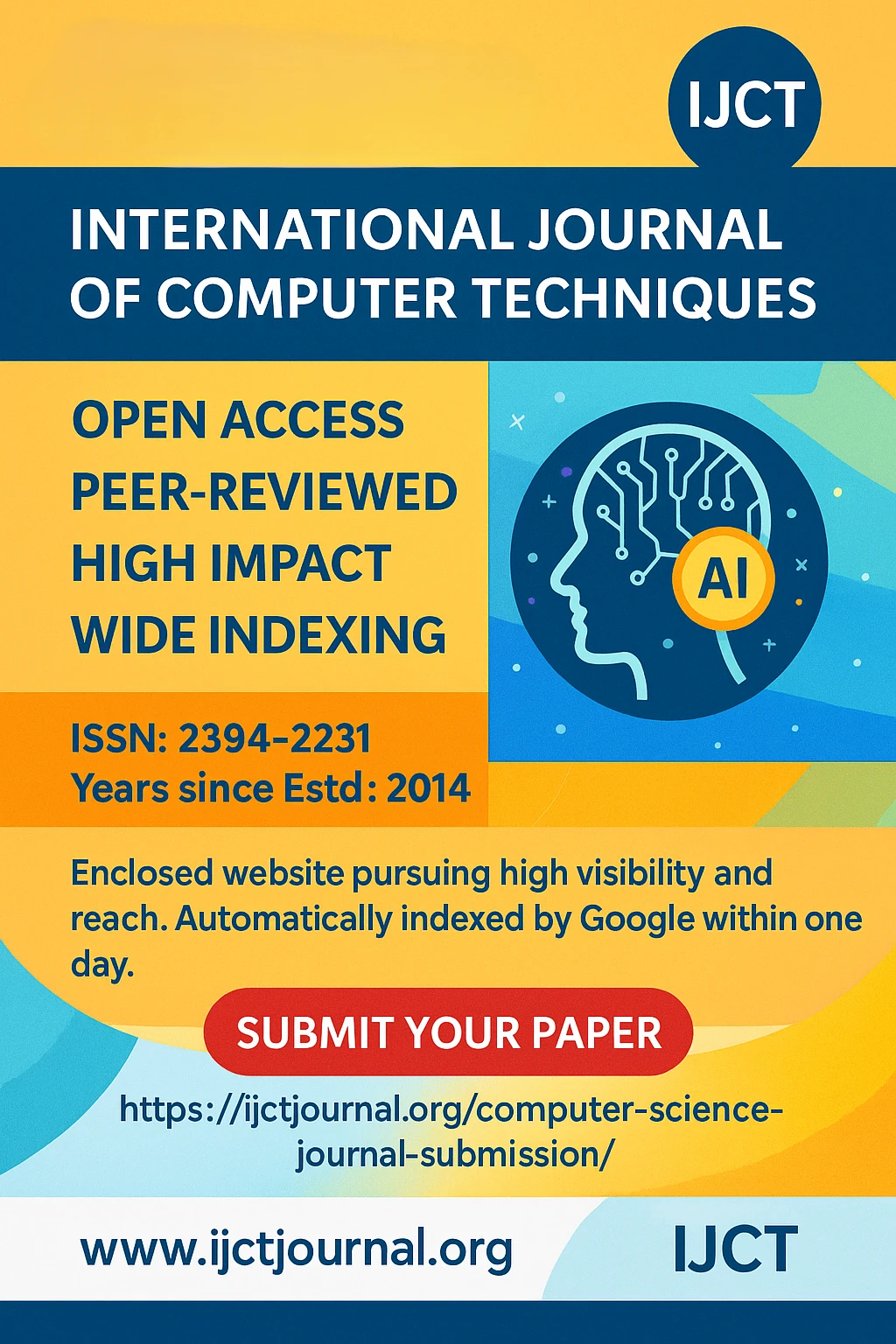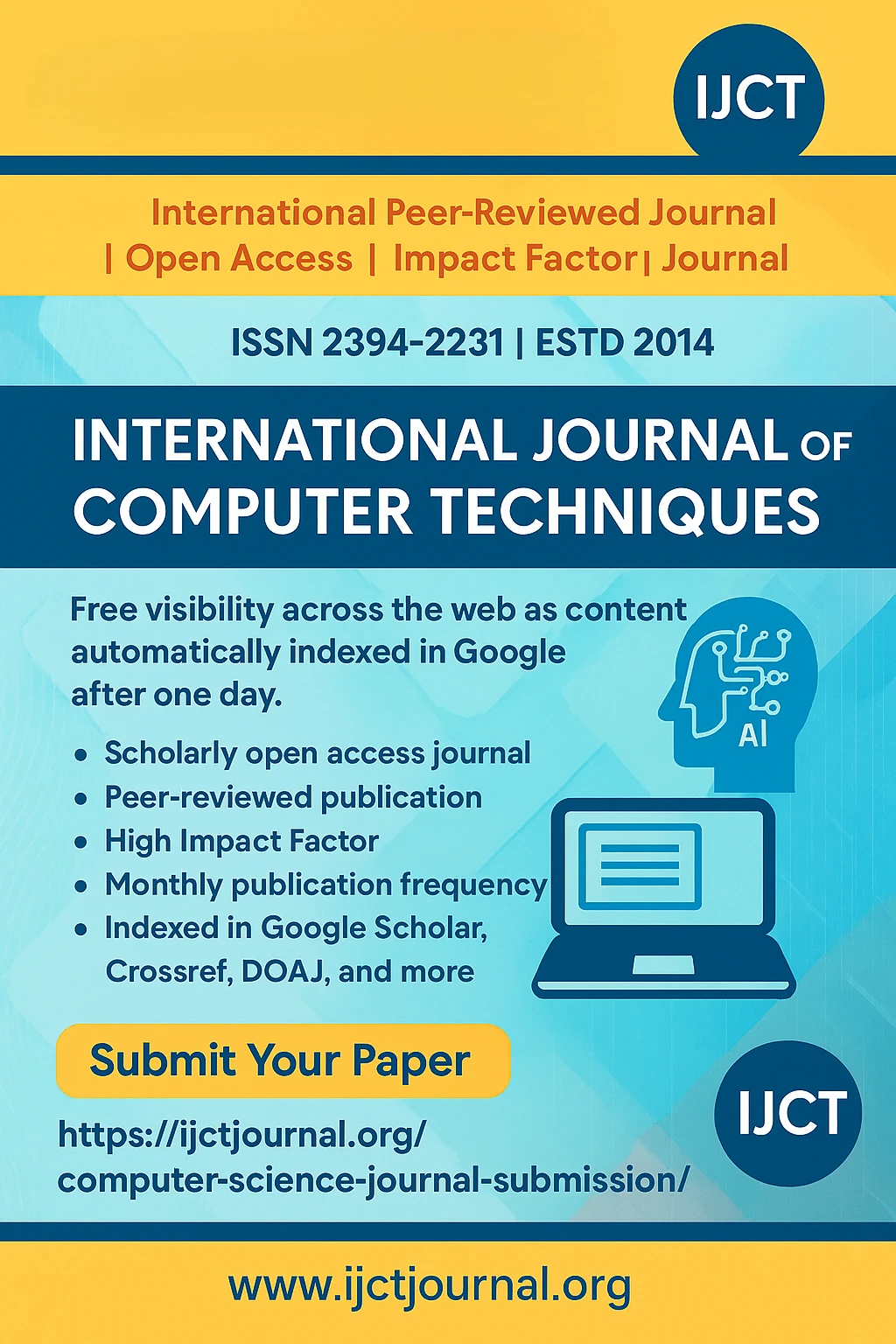
Building Resilient DevOps Pipelines:Enhancing Automation, Monitoring, and Recovery in CI/CD – IJCT – Volume 5 Issue 4

International Journal of Computer Techniques
ISSN 2394-2231
Volume 5 Issue 4 | Published: July 2018
Author
Anbarasu Arivoli
Abstract
The increasing complexity in the software delivery process requires highly resilient DevOps
pipelines that can remain effective without expensive downtime and deterioration. This article sets out the
strategies for building self-healing systems, real-time monitoring, and predictive analytics in enhancing
the resilience of pipelines. More importantly, it offers an overview of identified critical challenges, which
include frequent system failures, monitoring that was hitherto simply inadequate, manual troubleshooting
that is highly ineffective, and very little foresight into disruptors. The research highlights AI-driven self-
healing mechanisms, strong monitoring tools in Prometheus and Grafana, predictive machine learning
models for proactive issue resolution, and practical recommendations that emphasize phased adoption,
continuous training of the team, and the right mix between automation and human oversight. Such
solutions directly and significantly minimize downtime and enhance overall operational agility.
Keywords
DevOps resilience, CI/CD pipelines, self-healing systems, real-time monitoring, predictive analytics, AI-driven automation, machine learningConclusion
Optimum resilience in the DevOps pipeline is
possible if all aspects of the provisions are
automated, kept under observation in real-time,
and supported through predictive analysis- thus
guarantees no hitches in the unbroken delivery
of the software. The self-healing integrations cut
down downtime by detecting and solving
matters before actual breakdowns occur. Real-
time monitoring tools ensure quick anomaly
detection and resolution, which is further
strengthened by predictive analytics that
indicates disturbances prior to their occurrence,
hence the effective elimination of bottlenecks.
However, to adopt these technologies,
continuous learning, and iterative improvement
are the need of the hour. It's also about
automation versus human oversight in
organizations, always ready to change their
strategies based on changing best practices and
performance metrics. For future trends, it will be
more advanced in its predictive capabilities,
have more autonomy in remediation, and have
deeper integration concerning decision-making
with AI. All these things will further enable an
organization to build a strong, efficient, and
resilient software delivery environment.
References
[1] Tyagi, A. (2024). Intelligent DevOps: Harnessing Artificial Intelligence to Revolutionize CI/CD Pipelines
and Optimize Software Delivery Lifecycles. Journal of Emerging Technologies and Innovative Research.
Available: https://www.jetir.org/papers/JETIR2103439.pdf
[2] Josh, H. (2024). Self-Healing Infrastructure: AI-Powered Automation for Fault-Tolerant DevOps
Environments. Available on ResearchGate.
[3] Henry, J. (2024). Integrating AI-Driven Insights into DevOps Practices. SSRN Electronic Journal.
Available: https://ijsra.net/sites/default/files/IJSRA-2024-1838.pdf
[4] Pum, M. (2024). Optimizing Continuous Integration and Continuous Deployment Pipelines with Machine
Learning: Enhancing Performance and Predicting Failures. Advances in Science and Technology
Research Journal. Available: https://www.astrj.com/pdf-197406-120644
[5] Dileepkumar, V., & Mathew, R. (2024). DevOps Essentials: Key Practices for Continuous Integration and
Continuous Delivery. ResearchGate. Available: https://www.researchgate.net/publication/382885510
[6] Kahur, K. (2024). AI-Driven DevOps: Enhancing Automation in Software Development Pipelines.
ResearchGate. Available: https://www.researchgate.net/publication/388634890_AI-
Driven_DevOps_Enhancing_Automation_in_Software_Development_Pipelines
Journal Covers
IJCT Important Links
© 2025 International Journal of Computer Techniques (IJCT).









